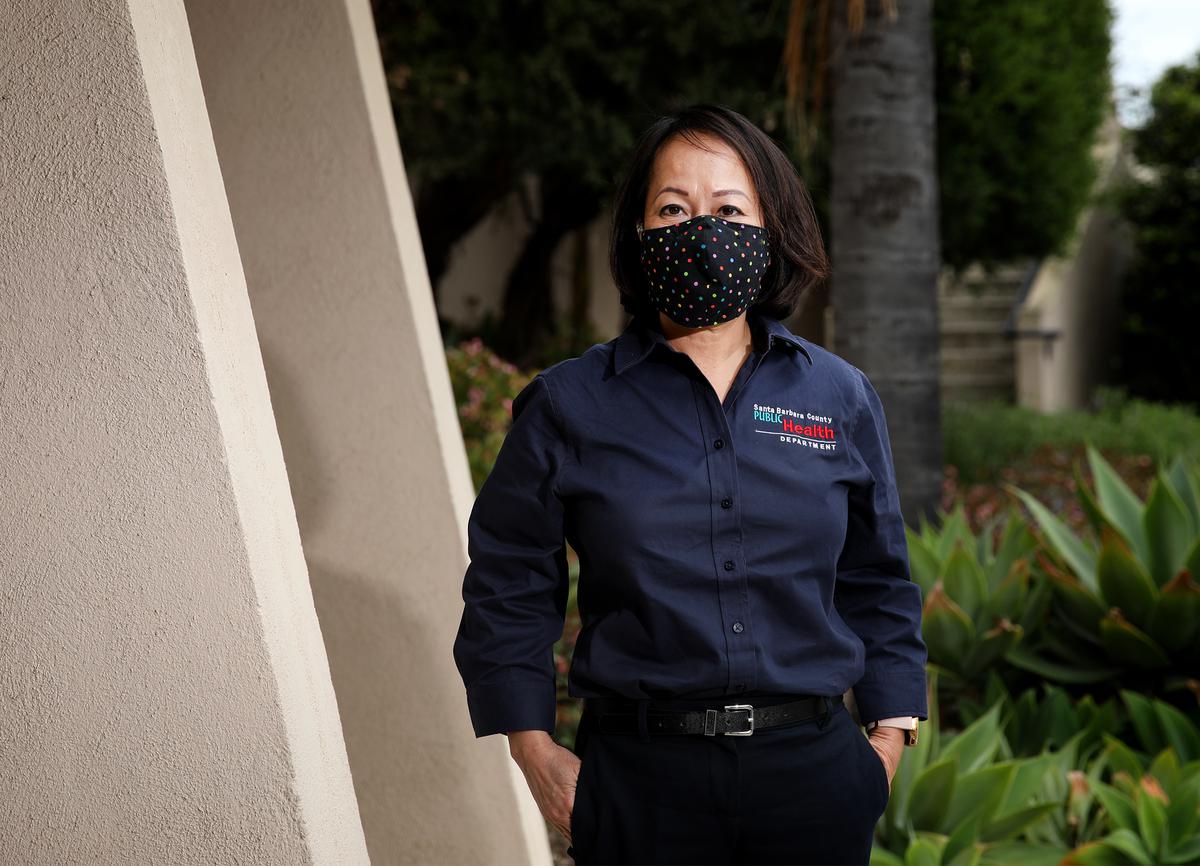Santa Barbara County Sees Soaring COVID-19 Cases
Public Behavior Must Change, Health Director Says

Unpredictable state mandates and soaring COVID-19 cases have thrown many Santa Barbara County residents into a state of fear and confusion in recent weeks, but Public Health Director Van Do-Reynoso painted a clearer picture of the situation Tuesday.
“If we are to continue to reopen as a county, then behavior must change,” Do-Reynoso said at the Board of Supervisors hearing. “That behavior change will be seen in our disease metrics and later in our hospitalization rate and capacity.”
She reported a 49 percent increase in cases over the past two weeks countywide. Santa Maria, the county’s largest hotspot for the virus, had an 84 percent increase in the same time period. The City of Santa Barbara had a 115 percent increase.
The 30th death from the virus was reported Tuesday, and four youth and two staff at the Santa Maria Juvenile Hall have now tested positive. The Sheriff’s Department found three new positive cases among custody deputies in the past week.
The increase in cases along with other concerning metrics have put the county on the state’s monitoring list for more than 21 days. Do-Reynoso said that the county has only 33 percent of its medical/surgical beds available in the case of a sudden surge, which is considered “moderately concerning” by state metrics.
There were 69 patients hospitalized for COVID-19 in the county when Do-Reynoso made her presentation, 21 of whom are recovering in intensive care unit units. The state factors in other types of patients who require medical and surgical beds to assess the percentage of beds available in the case of a COVID-19 surge.
Do-Reynoso also said that only 60 percent of the county’s hospitals have more than 14 days’ worth of personal protective equipment (PPE), such as masks and disposable gowns, on hand, which is considered “more concerning” by the state’s metrics. Do-Reynoso said she has submitted a request for more PPE to the state.
The alarming rise in cases has set off unpredictable reopening setbacks for local business owners. Just last week, the state mandated the second closure of bars and breweries that don’t serve food and for all indoor restaurant dining to shift to outdoor-only seating or takeout.
“It’s difficult to understand these new mandates, and to give small businesses one or two days to implement these things was really unbelievable,” said Terri Stricklin, manager of the Hitching Post in Casmalia, to the supervisors. “You don’t have to call your employees, people dependent on the job you supply to them, and tell them once again that they’re out of work. Many small businesses will go out. They will go under.”
Stricklin said she understood that it was no fault of the supervisors that the mandates are so erratic because 2nd District Supervisor Gregg Hart emphasized how difficult communications are between the state and local governments.
“I’m sure people that are not involved in government think this is all seamless and it is easy and the state mandates are clearly communicated to local governments, but that is not the case,” Hart said.

Hart voiced frustrations with the county’s limited ability to respond to the pandemic due to state and federal powers over the county. He pointed to the county’s massive backup in processing COVID tests as a prime example of a problem the supervisors and County Public Health have no authority to fix.
The three state-funded testing sites in the county have a major backup, and the system takes five to eight days to deliver test results. At the same time, the state requires county contact tracers to reach positive cases within three days — forcing them to work “around the clock” each time the state delivers a big data dump of test results.
“It is fundamentally a problem of our public health system in the United States that relies on private companies to do things that other countries don’t do through the private sector,” Hart said.
The COVID obstacles stretch far beyond testing capacity. Santa Maria has emerged as ground zero for the pandemic in Santa Barbara County, where a substantial number of farmworkers live. Farmworkers have contracted the virus at higher rates than other types of essential workers.
“Agriculture is the largest employer of essential workers in our county, and if we want to get serious about stopping workplace transmission of the virus, this is the first place you should look,” said Hazel Davalos, the organizing director with the Central Coast Alliance United for a Sustainable Economy (CAUSE).
CAUSE and the Mixteco/Indigena Community Organizing Project partnered to ask the boards of supervisors for Ventura and Santa Barbara counties to take several measures to protect and enforce the vulnerable population. Do-Reynoso said that her department is doing “extensive outreach” to communities most affected by the virus — particularly farmworkers. The Public Health Department is also contacting the Black, Indigenous, Asian, and Latino communities.
When it came to enforcement in general, Do-Reynoso told the supervisors that it is “very broad” in terms of who can enforce health orders. The Sheriff’s Office and city police can enforce the public wearing of face coverings and social distancing, as well as enforcing orders in certain business sectors, though they typically try to use education as the main approach. The slow approach might not be enough, though. Of all the county’s cases, 57 percent are related to person-to-person transmission; one percent are related to travel; and 42 percent are community acquired. Nearly all cases are acquired in Santa Barbara County, nearly half of which are contracted in the community with no known source.



You must be logged in to post a comment.